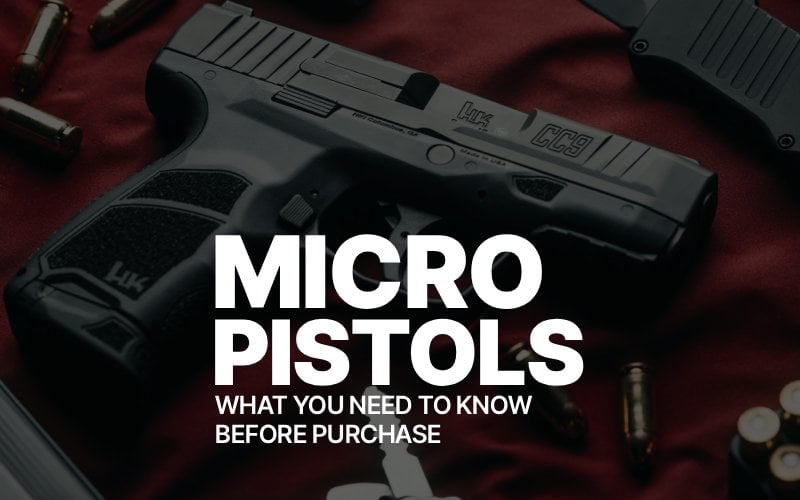Before the SIG P365 arrived in 2017, your options for concealed carry were limited to either single-stack pistols holding 6-8 rounds or double-stack subcompacts. The P365 changed this by introducing a “stack-and-a-half” magazine design that squeezed 10+ rounds into a package roughly the size of those old single-stacks.
Today’s micro-compacts typically feature:
- Overall length typically between 5.8″-6.1″
- Height around 4.3″-4.6″
- Barrel length 3.0″-3.2″
- Thickness generally 1.0″-1.1″
- Capacity ranging from 10-15 rounds in 9mm
- Striker-fired action (with few exceptions)
- Optics-ready variants are increasingly common
Compare that to the Glock 26 – a true double-stack subcompact that was released in 1994. The G26 holds 10 rounds but measures 1.26″ wide. Most micro-compacts match or exceed its capacity while being noticeably thinner.
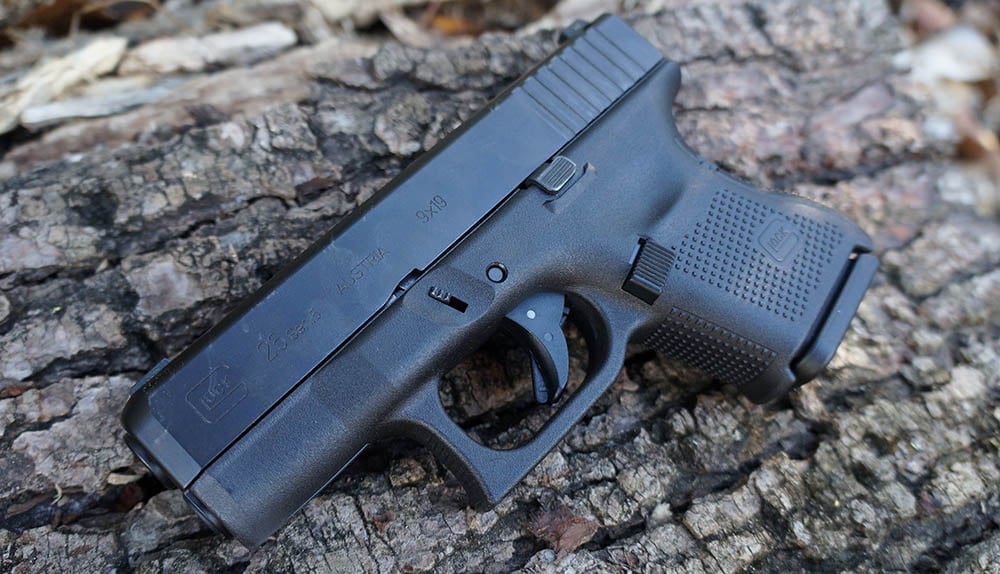
Micro-Compact or Subcompact?
So, the G26 is a staple of traditional subcompact pistols for a reason. Its wider grip gives more area for your hands, which translates to better recoil management and, consequently, to easier and accurate shooting.
As a bonus, the magazine versatility is huge. A G26 accepts any double-stack Glock 9mm magazine – from 12-rounders up to 33-round extended mags, making it comfortable to train with.
However, that extra width cuts both ways. While the G26 is only about 0.16″ wider than a Glock 43X, those fractions of an inch can make a noticeable difference in concealability, especially for appendix carry.
The big advantage of micro compact pistols is their slim grip that makes them easier to conceal than traditional double-stacks. This not only makes them more convenient for all day carry but also more versatile in terms of carry styles. And all that you get without capacity losses. For instance, the standard P365 holds 10+1 or 12+1, while the Shield Plus offers 13-15 rounds.
Best Micro Compact Pistols
SIG Sauer P365
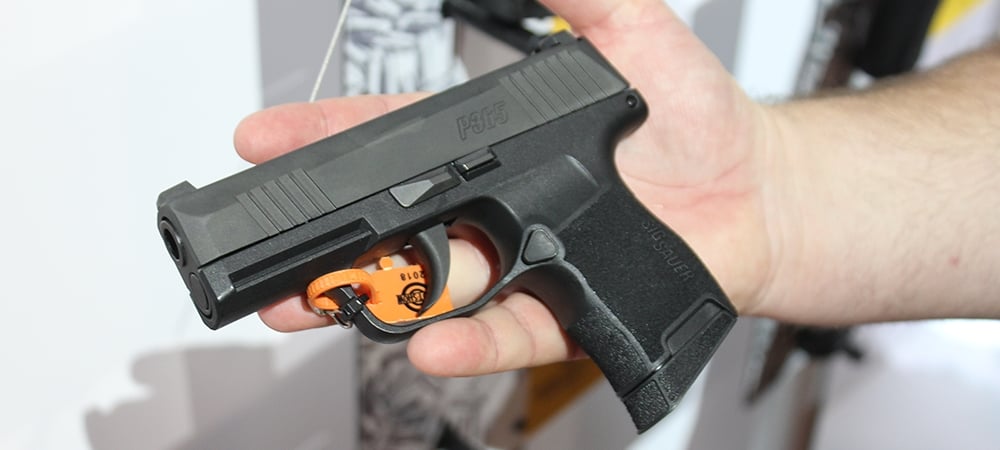
The SIG P365 started the micro compact revolution. Despite its age, the pistol remains highly competitive. It offers an impressive capacity of 10+1 / 12+1 rounds in its standard variation while being 1.06″ wide. Optics-ready models are widely available.
However, the true beauty of the P365 is that the platform allows you to swap grip modules, slides, and barrels to create configurations ranging from the micro P365 (3.1″ barrel) all the way up to the P365 XL (3.7″ barrel) or X-Macro (3.1″ barrel, 17+1 capacity). One fire control unit creates multiple setups without extra paperwork.
Potential deal breakers include the trigger lacking safety blade (although, some view this positively) and that it feels a bit snappier than some alternatives.
Smith & Wesson Shield Plus
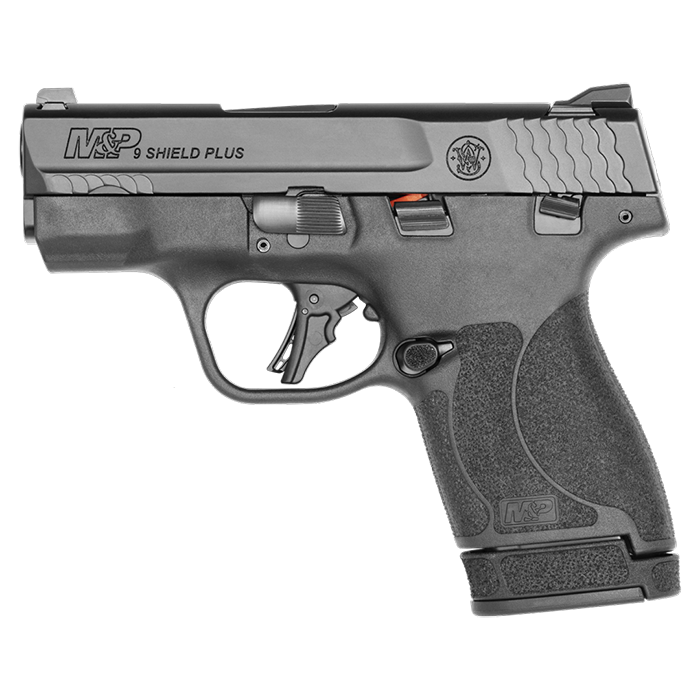
The S&W Shield Plus was built on the massive success of the original S&W Shield by increasing capacity without changing dimensions significantly. This meant existing Shield owners could adopt it and not buy a new holster for it.
What users love about the Shield Plus is stellar reliability, 13+1rd capacity, and the unique ergonomics that feel natural and work with most hand sizes. Many report better accuracy with the Shield Plus than with more expensive options (street price for the pistol is often under $400). Today, S&W has multiple configurations of this model, including the models with a threaded barrel or a compensator.
On the other hand, some find the trigger unpredictable, a staging point that can feel a bit inconsistent (Performance Center models have upgraded triggers). Also, the grip texture, while aggressive, can be too rough for extended shooting or concealed carry against bare skin.
Springfield Hellcat
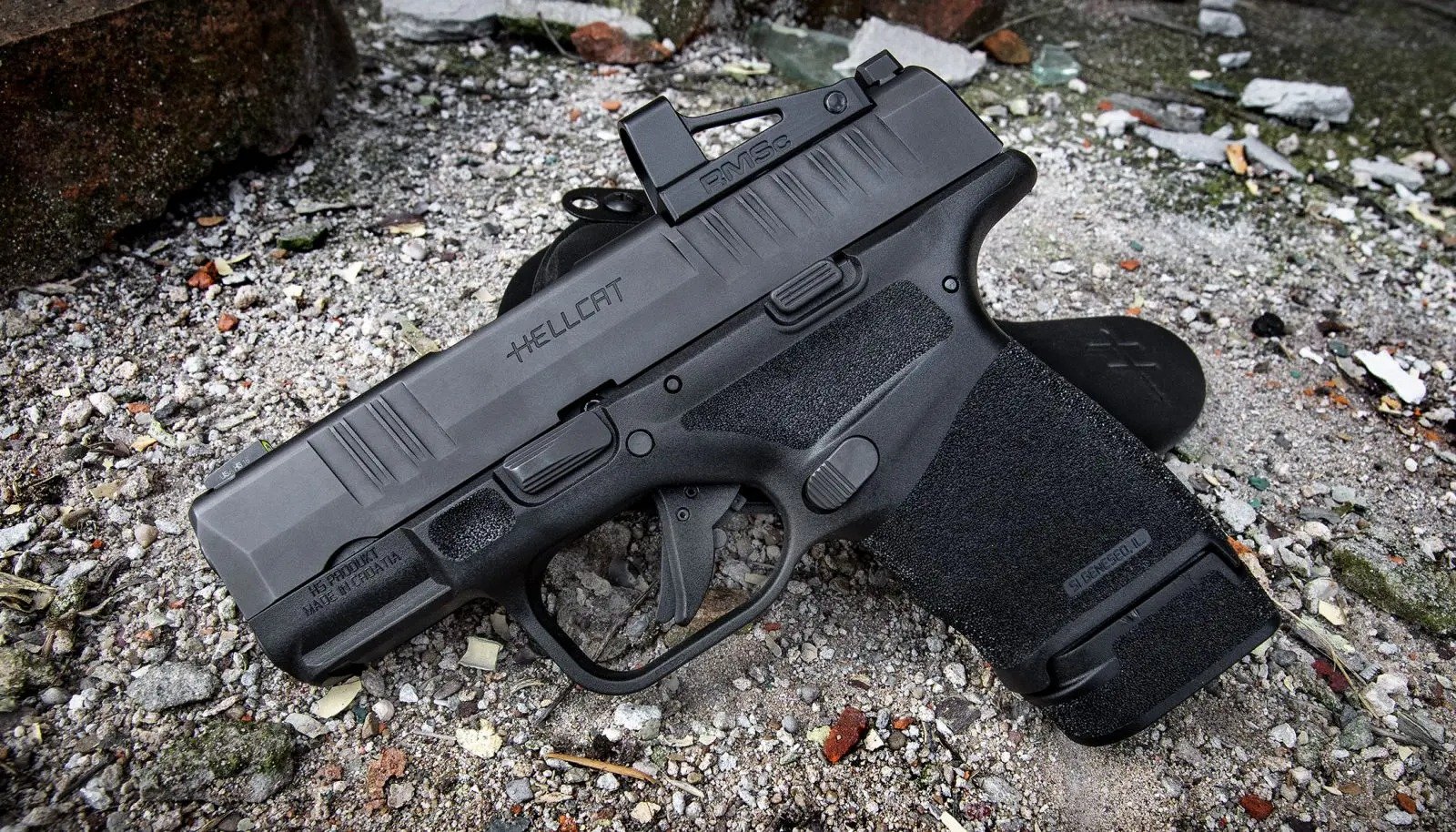
The Springfield Hellcat answered the P365 with one more round of capacity, making it 11+1 / 13+1, and special Adaptive Grip Texture, which is basically a slightly softer polymer that provides good grippiness without abrading the skin. This micro compact pistol also has excellent sights pre-installed – tritium front one and a bright tactical-style U-notch rear one.
The pistol won’t suit everyone. Due to its dimensions, it can feel blocky in larger hands. Also, it’s definitely on the snappier side (the Hellcat Pro shoots more smoothly).
HK CC9
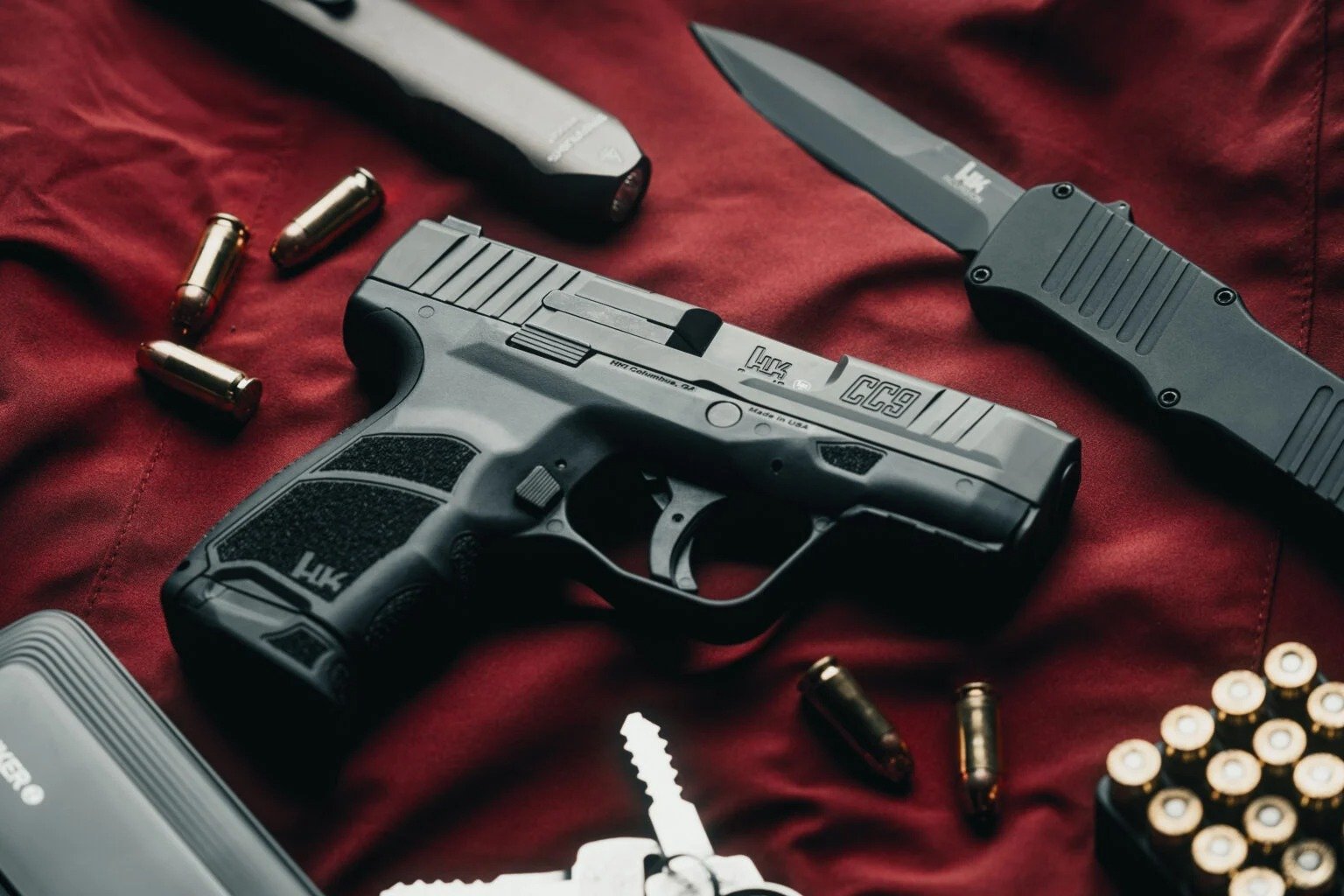
The CC9 is HK’s entry into micro compacts. German engineering shows. The quality of the factory trigger is superb, notably better than most striker-fired competitors. Also, it shoots softer than its size suggests and feels good in hand. Ergonomics are excellent.
As for limitations, HK CC9 magazine availability lags behind established platforms and pricing runs higher. Holster selection is still catching up compared to established platforms, but that’s kind of natural.
Canik METE MC9 Series
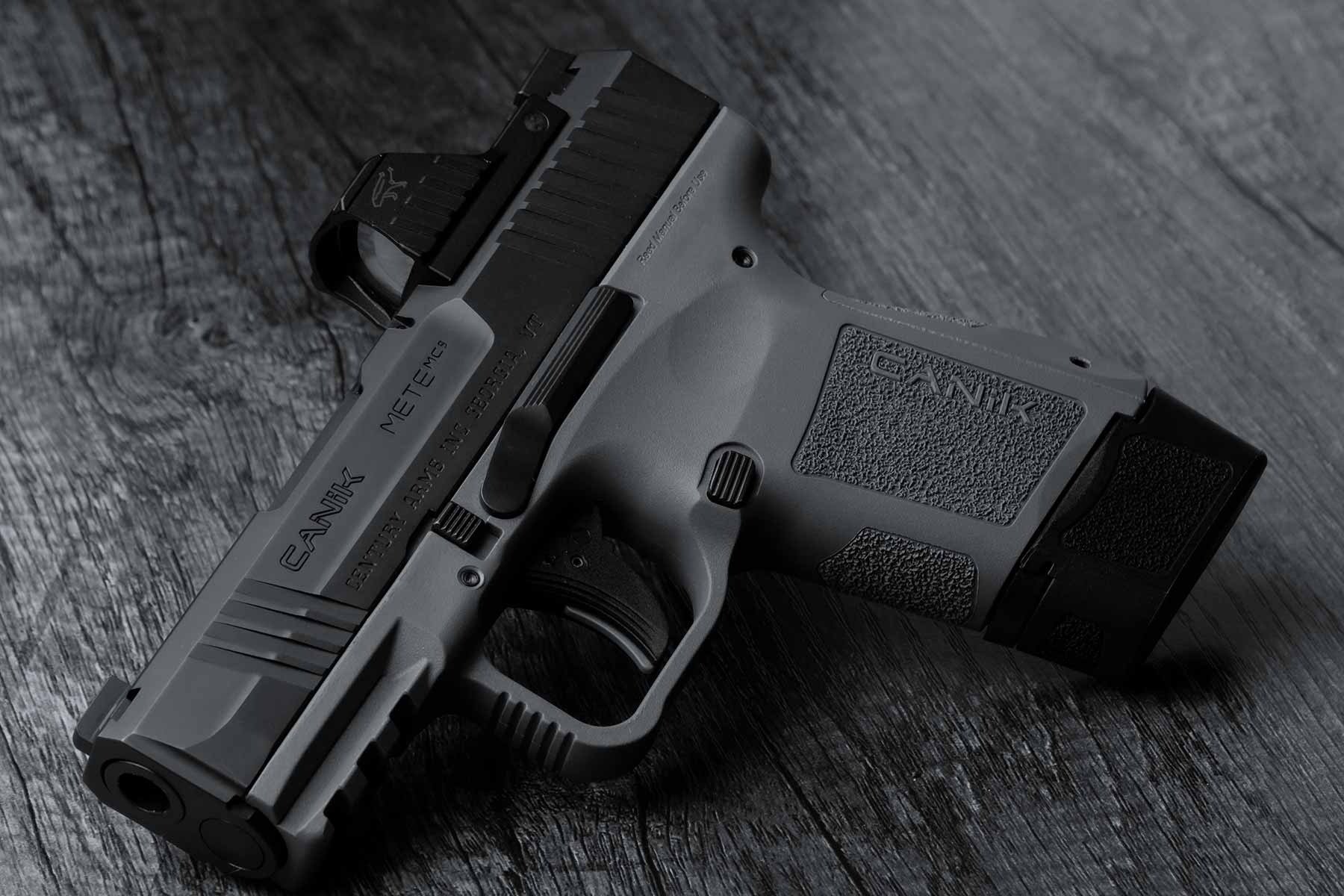
Canik has quietly become a major player by offering excellent value. The MC9, MC9L (longer grip), and MC9 Prime (ported slide) all deliver features typically found on more expensive guns, such as excellent trigger out of the box, great ergonomics, quality machining and materials. Moreover, the full kit includes accessories (extra magazines, backstraps, IWB holster, etc.), which makes the package deal even better.
Kimber R7 Mako
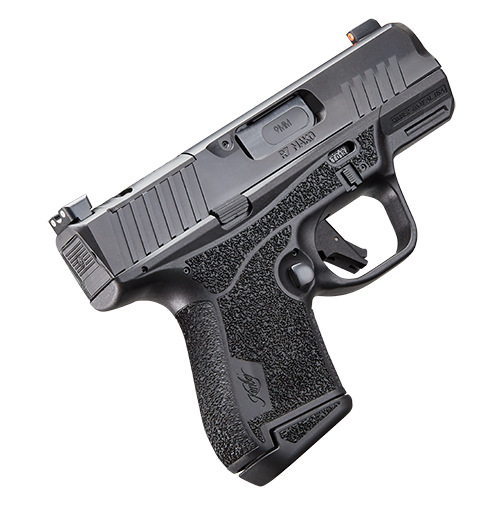
The R7 Mako brings Austrian engineering to the American market with unique features. The main feature is its special Browning-Bubits locking system in which the locking surface sits further back on the barrel, resulting in less tilt during cycling and a smoother recoil impulse. The pistol also has a closed-top slide that keeps debris off your optic, fully ambidextrous controls, and good ergonomics with the extended magazine. The only downside is the limited holster selection.
Taurus GX4
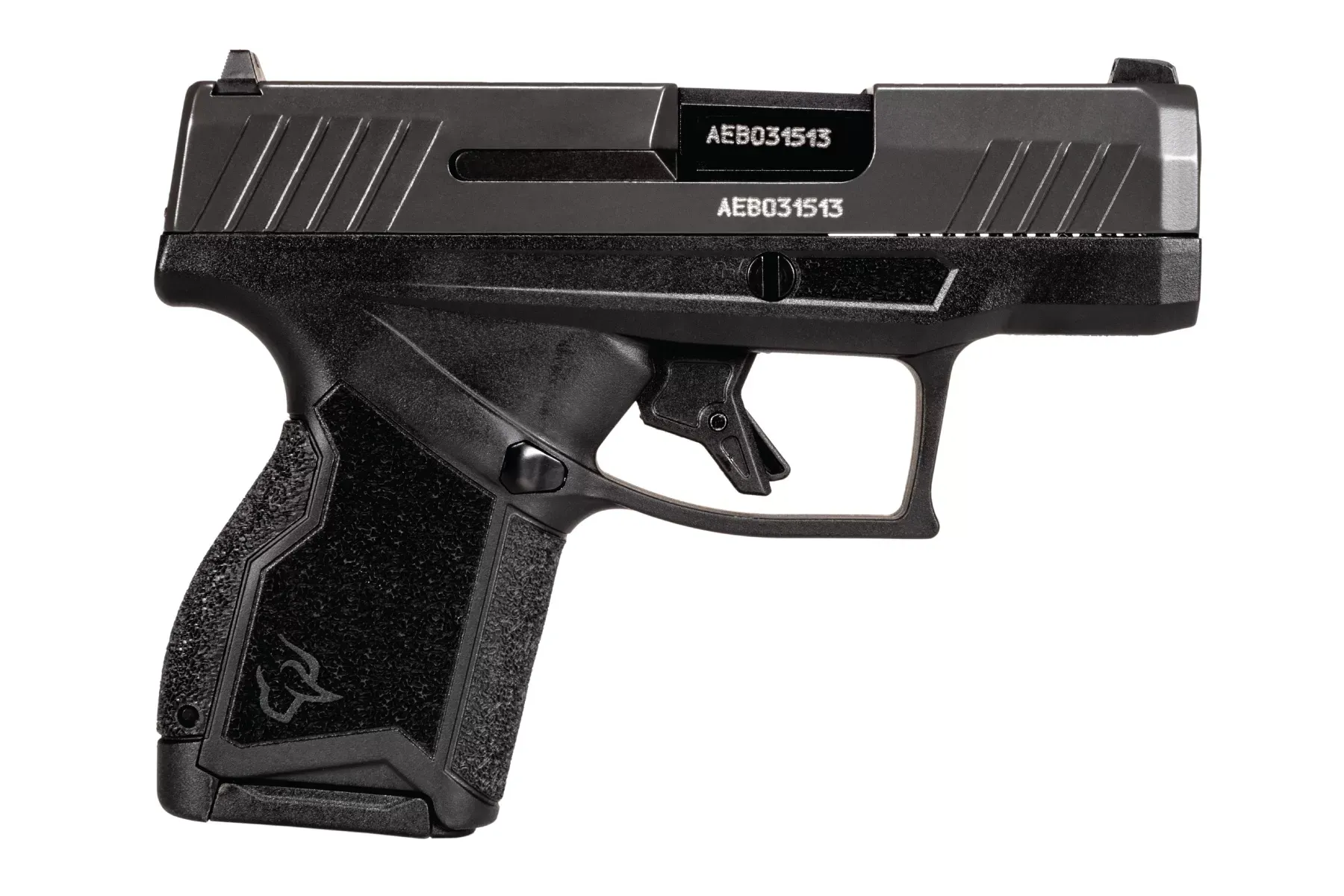
The Taurus GX4 offers similar specifications to the big-name competitors at a significantly lower price point. Early barrel issues were quickly addressed under warranty, and current production runs strong. The main advantage is value for money – it does everything it’s supposed to do for less money than competitors.
FN Reflex
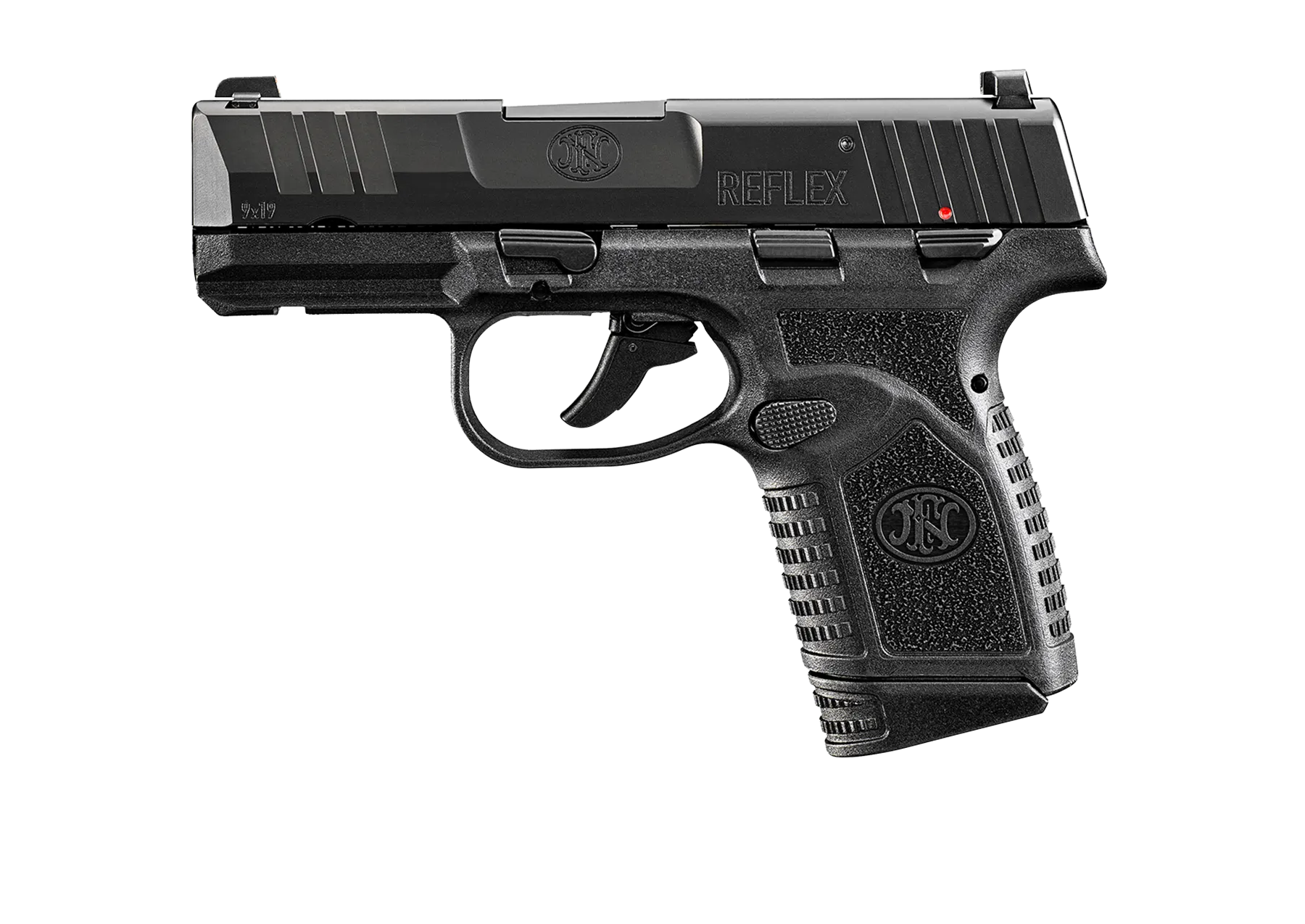
FN Reflex micro compact pistol features an internal hammer, which is unusual for this category but for those who prefer hammer-fired guns for carry, this is it. While the trigger doesn’t capitalize on hammer-fire potential, the construction is high-quality and the performance is solid.
A Few Things to Keep in Mind
The importance of practice
When doing your research of the market for micro compact pistols, you may often come across people advising against them because of their limited grip area, which compromises your control over the pistol, and snappiness. Well, a magazine with a pinky extension fixes the former issue.
As for snappiness, micro 9s do recoil more than larger guns. That’s physics: a smaller, lighter gun will kick harder than a larger, heavier one. However, “snappiness” is also subjective, and technique and practice can overcome much of the discomfort.
Some even say that they shoot smaller guns better than larger, “easier” options simply because the smaller gun fits their hands better. A good grip is your best solution for muzzle flip (some users add Hogue grips or other accessories to improve handling).
Stepping down to a .380 micro pistol can reduce felt recoil but that concerns modern handguns only. The thing is earlier 380 pistols were built on a straight-blowback design. This mechanism, while simple, often results in a surprisingly sharp recoil, sometimes even more pronounced than what you’d feel from a larger, modern 9mm pistol.
However, that changed with the introduction of 380 pistols that use locked-breech design, like the S&W Bodyguard 2.0, Ruger LCP MAX, SIG 365 380, SIG P365 LUXE, or Springfield Hellcat 380.
As for the 380 ballistics, for a long time, many .380 HP rounds struggled to meet FBI standards for penetration. Thankfully, modern self-defense loads for the .380 ACP show much-improved performance. So, while a 9mm generally offers better terminal performance, a well-placed shot from a .380 with quality defensive ammo is going to get the job done.
READ: Best 380 Ammo for Self Defense & Target Training [2025]
The only serious limitation of the .380 is that .380 ammo is more expensive than 9mm.
So, whatever caliber you’re going to choose, when training, don’t try to shoot 200 rounds in your first range trip with your new micro compact pistol. Build up gradually as you develop the proper grip and technique.
Concealment requirements vary by person
Body type, wardrobe, and carry position dramatically affect what conceals well. A 0.2″ difference in width might be meaningless to someone with a larger frame but critical for a smaller person carrying appendix inside the waistband. Also, many note that grip length matters more than width for their concealment needs.
READ: The Complete Guide to CC Holsters That Will Save You Money
Magazine compatibility and holster availability
This is often overlooked until you need extra magazines. Established platforms have abundant magazine options, including aftermarket high-capacity versions. Newer platforms, on the other hand, have fewer options and potentially higher costs. The same concerns holsters. Newer or less popular options might have limited selections, forcing compromises on retention, comfort, or features. This is just something to keep in mind.
Optics compatibility
Most modern micro-compacts come optics-ready or have optics-ready versions. If you plan to add a red dot, verify the optic footprint and whether adapter plates are needed (and available).
Pistol Training in DFW
Basic Handgun Safety
Intro to Basic Pistol Skills
Pistol
Marksmanship 1
Pistol
Marksmanship 2
Should a Micro 9 or Micro 380 be Your First Pistol?
If you’re looking for your first handgun for concealed carry, a micro-compact might seem like the obvious choice. But is it a good idea to learn on a smaller gun?
On one hand, there’s a strong argument for practicality. A gun that’s comfortable and easy to conceal is one you’re more likely to carry consistently (a gun you carry is always better than a larger one left at home). Also, starting with a more challenging gun can also force you to master the fundamentals of grip and trigger control from the get-go.
However, smaller guns are less forgiving; their shorter sight radius means that even tiny misalignments have a bigger impact on accuracy. The recoil can make practice less enjoyable, potentially discouraging regular training.
This creates the ultimate dilemma: should you master a smaller, snappier gun, or learn to conceal a larger, more shootable one?
Many recommend starting with a compact, Glock 19-sized pistol. These are large enough to shoot accurately and control easily, yet still manageable to conceal for most body types with a quality holster and gun belt. However, a smaller, lighter gun is simply more comfortable for all-day carry, particularly in warmer climates or with more fitted clothing, which means you’re more likely to carry it consistently.
A popular solution is the two-gun system: owning both a larger “fighting” gun (compact or full-size) for home defense and primary training, and a smaller micro-compact for everyday carry. By training mostly on the larger, more forgiving gun, your shooting skills improve rapidly and transfer to the smaller pistol, which you practice with less frequently (perhaps 20% of your training time). This approach allows you to develop strong fundamentals without the frustration of learning exclusively on a micro-compact.
